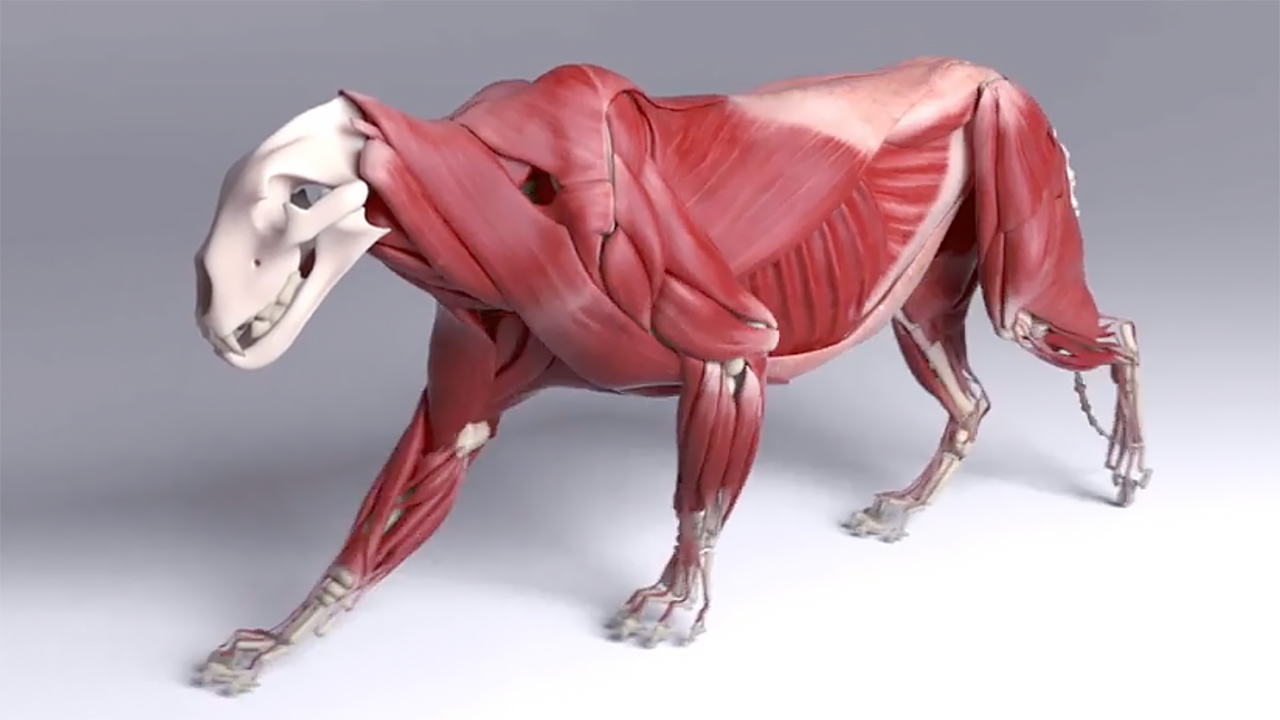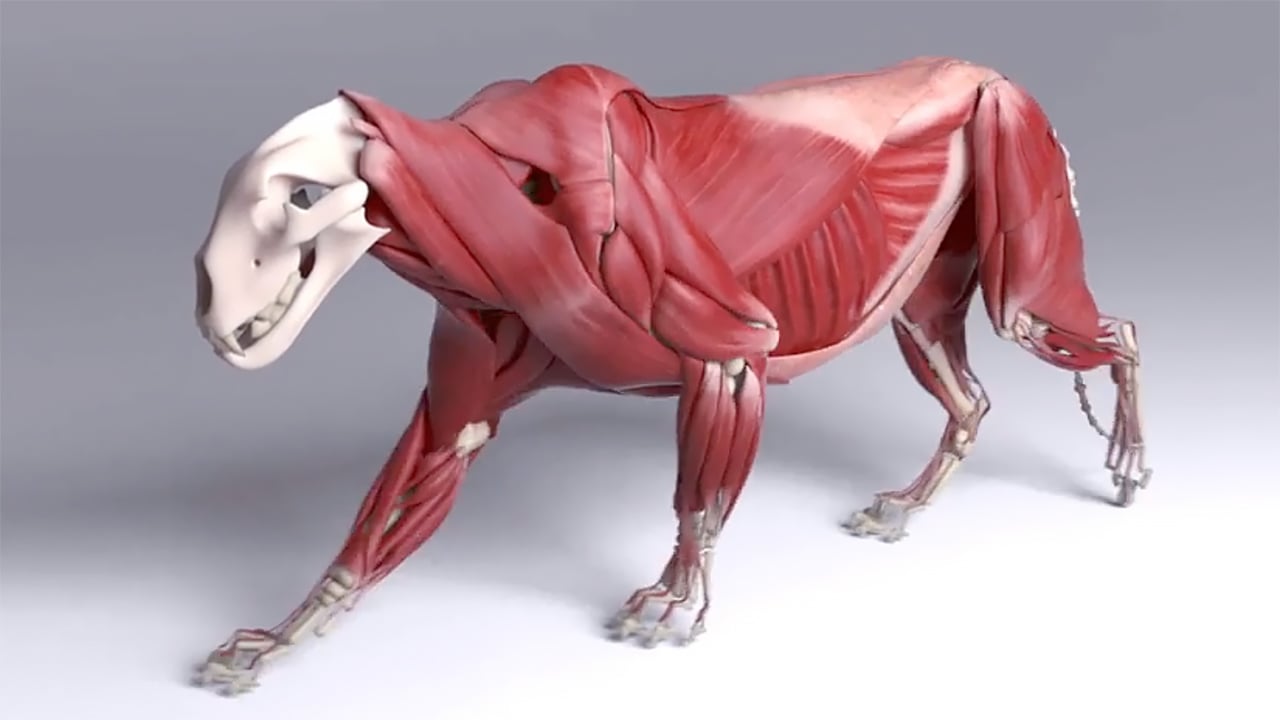
 The Ziva VFX plugin from Ziva Dynamics allows realistic animal animation to be produced easily within Maya
The Ziva VFX plugin from Ziva Dynamics allows realistic animal animation to be produced easily within Maya
Why is it so hard to achieve realistic animal animation?
In the UK, about fifteen years ago, a TV program called "walking with dinosaurs" blew viewers away with a new sort of realism. The simple idea was to show computer animated dinosaurs moving around in their natural habitats, interacting with each other, looking as real as possible.
Of course, "as real as possible" wasn't great by current standards; but at the time, the images easily exceeded our expectations.
Dinosaurs were an ideal subject. We've always been fascinated by them, but, much more important from a technical viewpoint was that they're relatively easy to animate. They don't have fur, they move fairly slowly (ie they're not athletic) and - perhaps most importantly - nobody has ever seen one. So even if they're not 100% accurate, it's not going to spoil the effect.
Realism isn't straightforward
Animating, say, a tiger, would at the time have been a huge challenge. It's one thing to make a model that can move around using its four feet. It's quite another to make it look better than an animated clothes horse.
Here's the issue. When you look at a tiger from the outside (which is hopefully the only way any of us will see the beautiful animals), what you see is the result of an awful lot of complexity going on inside the beast.
But we can't see exactly what's going on. And so any animation is going to be based purely on observation. At the very least, if you ask the model to do something that you've never seen a real tiger do, then you're going to have to guess. Far worse, it means that any even slightly accurate modeling is going to have to be painstaking. There's absolutely no sense in which the model "knows" what do do.
You might ask: "how can a model "know" anything?".
But this is a question that's not to do with knowledge, but behavior. A roller skate behaves the way it does because it's a roller skate. Tigers behave like tigers because they're tigers.
But what does being "like" a tiger mean?
It means having all the parts that make up a tiger, and connecting them into a viable tiger-like system. That means bones, muscles, fat, skin and fur. In other words, the entire dynamic system that makes a tiger move like a tiger.
Model all of this and you'll have a much better chance of an accurate and convincing animation.
It may sound painstaking, and it is (although there are now tools that help enormously). But in addition to giving a more believable result, it makes it easier, because the tiger "knows" what to do if you tell it to run in a certain direction, sit or stand, or walk round an object. The accurate model ensures that the feet and legs move correctly, and that the head carries itself in harmony not just with the body but with what the body is doing.
Here's a really great illustration of this by Sachina Shakya and Suchan Bajracharya.
Tags: Production


Comments